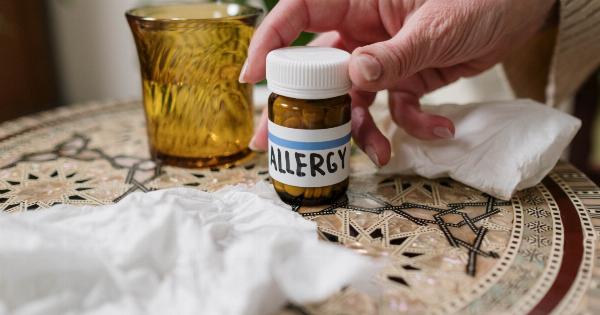Allergies can make life miserable for those who suffer from them. Sneezing, itchy eyes, and congestion are just a few of the symptoms that can make everyday activities difficult.
While you may not be able to control the substances causing your allergies outdoors, you can make a significant difference by creating a healthy home environment. Here are some effective tips for reducing allergies and promoting a healthier living space.
1. Keep Your Home Clean and Dust-Free
Dust mites are a major source of allergies, so it’s crucial to keep your home clean and free of dust. Regularly dust all surfaces like furniture, shelves, and fixtures using a damp cloth.
Vacuuming carpets, upholstery, and mattresses can also help get rid of dust mites. Consider using a vacuum cleaner with a HEPA filter to ensure that the allergens are trapped and allergen-free air is released back into the room.
2. Maintain Low Humidity Levels
Mold and dust mites thrive in high humidity environments. To prevent their growth, it’s important to maintain low humidity levels in your home. Use a dehumidifier in areas prone to moisture accumulation such as basements or bathrooms.
Keep the humidity levels below 50% to inhibit the proliferation of allergens.
3. Use Allergen-Proof Covers for Bedding
Bedding can harbor allergens, especially dust mites. Use allergen-proof covers for pillows, mattresses, and box springs to create a barrier between you and these tiny creatures.
Additionally, wash your bedding in hot water at least once a week to kill any existing dust mites.
4. Choose Hypoallergenic Flooring
Carpets and rugs tend to trap allergens, making it difficult to keep the indoor air clean. Consider opting for hypoallergenic flooring options like hardwood, tile, or linoleum.
These types of flooring are easier to clean and less likely to harbor allergens.
5. Keep Pets Out of Bedrooms
Pets can be a significant source of allergens, especially if you are allergic to pet dander. To minimize exposure, keep your pets out of bedrooms, preventing dander from settling on pillows and bedding.
Regularly groom and bathe your pets to reduce the amount of allergens they release into the air.
6. Clean Air Ducts and Vents
Air ducts and vents can accumulate dust and allergens over time. To ensure clean air circulation within your home, have your air ducts professionally cleaned at regular intervals.
Additionally, clean the vents and replace air filters frequently to prevent the recirculation of allergens.
7. Minimize the Use of Chemicals
Chemical-based cleaners, air fresheners, and aerosols can trigger allergies in sensitive individuals. Opt for natural alternatives when possible or choose products labeled as hypoallergenic.
Consider using fragrance-free detergents, as scented products can also aggravate allergies.
8. Regularly Clean and Replace Furnace Filters
Furnace filters play a crucial role in trapping allergens from the air. Regularly clean or replace furnace filters to maintain clean indoor air quality. Look for high-efficiency filters that can capture smaller particles and allergens effectively.
9. Control Indoor Humidity
As mentioned earlier, maintaining low humidity levels is important in reducing allergens. Use exhaust fans while cooking or showering to remove excess moisture from the air.
If necessary, use a hygrometer to monitor humidity levels and make adjustments accordingly.
10. Regularly Check for Mold
Moisture-prone areas like bathrooms, kitchens, and basements are susceptible to mold growth. Regularly inspect these areas for any signs of mold and address the issue immediately.
If you find mold, clean it thoroughly using mold-killing products or consult a professional for assistance.
Conclusion
By implementing these tips, you can significantly reduce allergens in your home and create a healthier living environment.
Regular cleaning, maintaining low humidity levels, using allergen-proof covers, and choosing hypoallergenic flooring are just a few of the strategies that can make a noticeable difference. Remember to consult with a medical professional if your allergies persist or worsen despite these efforts.




























